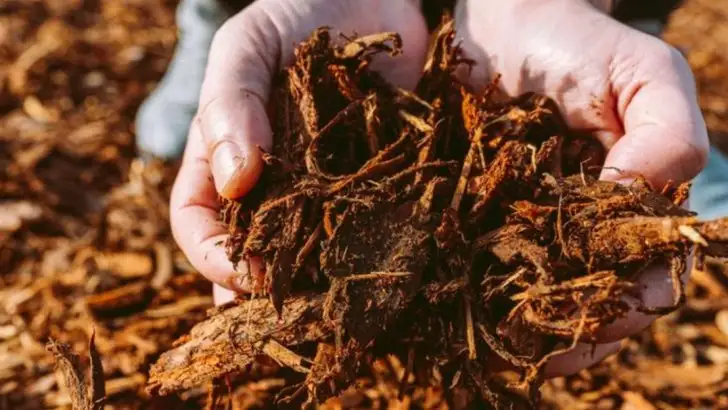Don’t toss out that old potting soil just yet! Over time, potting mix can lose nutrients and structure, but with a few simple tricks, you can refresh and reuse it to keep your plants thriving while saving money.
In this article, we share 12 clever ways to refresh and reuse old potting soil. From recharging it with compost and nutrients to sterilizing it to remove pests, these easy techniques will help you breathe new life into tired soil. If you want to cut down on waste and garden more sustainably, these smart soil-reviving tips are a must-try!
Composting
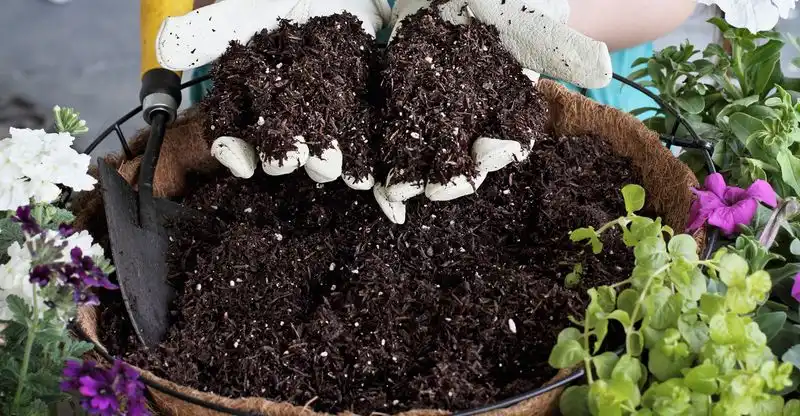
Revitalize old potting soil by adding it to your compost pile. Blending it with kitchen scraps and garden waste will transform it into nutrient-rich compost. This process involves mixing the soil with organic matter like fruit peels, coffee grounds, and grass clippings. Over time, microorganisms break down the materials, enriching the soil with essential nutrients. The result is a healthier, more fertile medium for future planting adventures. Not only does this reduce waste, but it also supports sustainable gardening practices. Composting is an excellent way to recycle old soil and contribute to a greener planet.
Soil Solarization
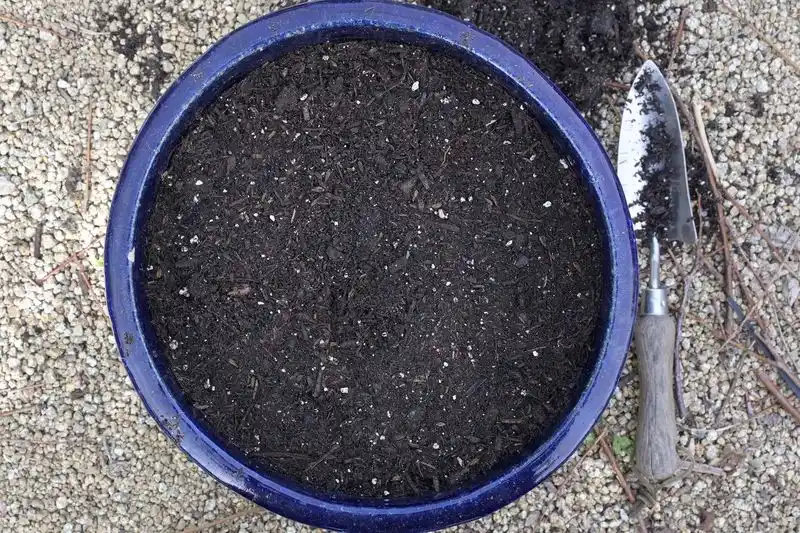
Harness the power of the sun to eliminate pests and diseases in old potting soil. Soil solarization involves covering the soil with clear plastic and leaving it in the sun for six to eight weeks. This process heats the soil to high temperatures, killing off unwanted pathogens and weed seeds. It’s an effective organic method to cleanse the soil without harsh chemicals. The treated soil becomes a healthier environment for plants. Consider solarization if your used soil has been plagued by pests. It’s a natural and eco-friendly solution that rejuvenates tired garden soil.
Vermicomposting
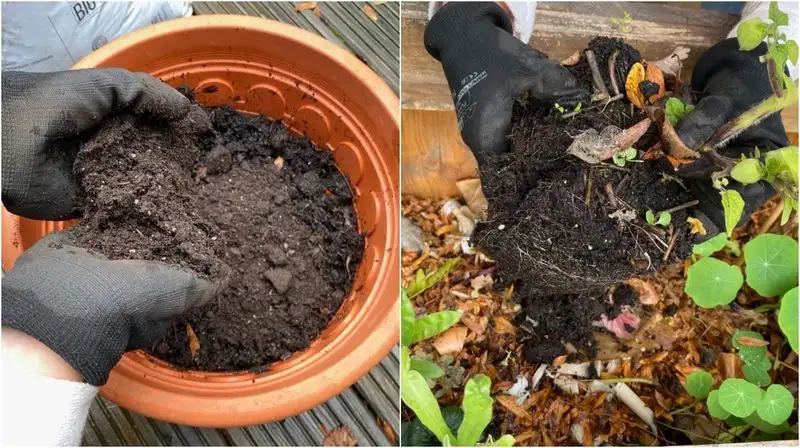
Vermicomposting is a fantastic way to enhance old potting soil. Introduce red wigglers, a type of earthworm, to a bin filled with soil and organic waste. These worms consume the material, producing castings rich in nutrients and beneficial microbes. The result is a robust soil amendment that improves structure and fertility. Vermicomposting is perfect for those with limited outdoor space, as it can be done indoors. It’s a sustainable method that not only enriches soil but also reduces kitchen waste. Give your tired soil a boost with the power of worms.
Mulching
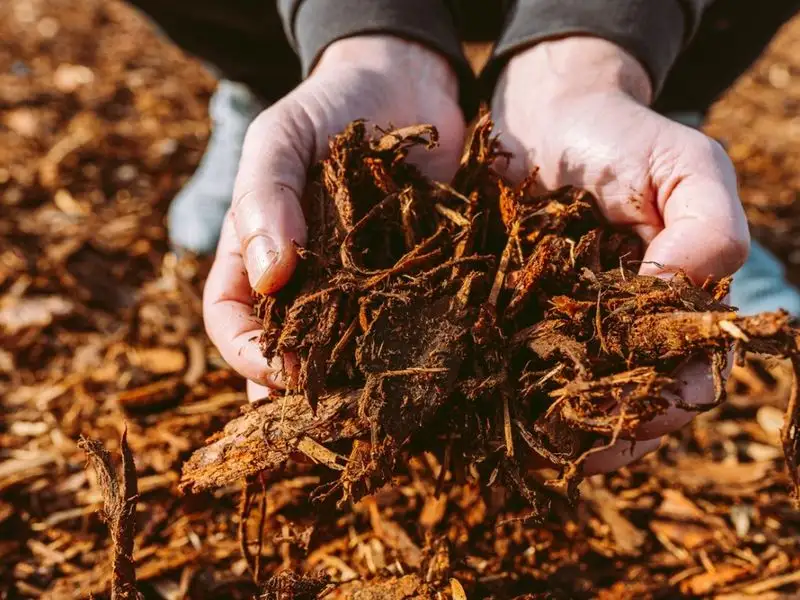
Use old potting soil as a base for mulch to conserve moisture and suppress weeds. Spread the soil around your plants, then cover it with organic materials like straw, wood chips, or leaves. This combination creates an insulating layer, regulating soil temperature and reducing evaporation. Mulching minimizes the need for frequent watering and protects plant roots from extreme weather. Not only does it make garden maintenance easier, but it also enhances soil structure over time. Embrace mulching to give your used potting soil a purposeful new role.
Raised Beds
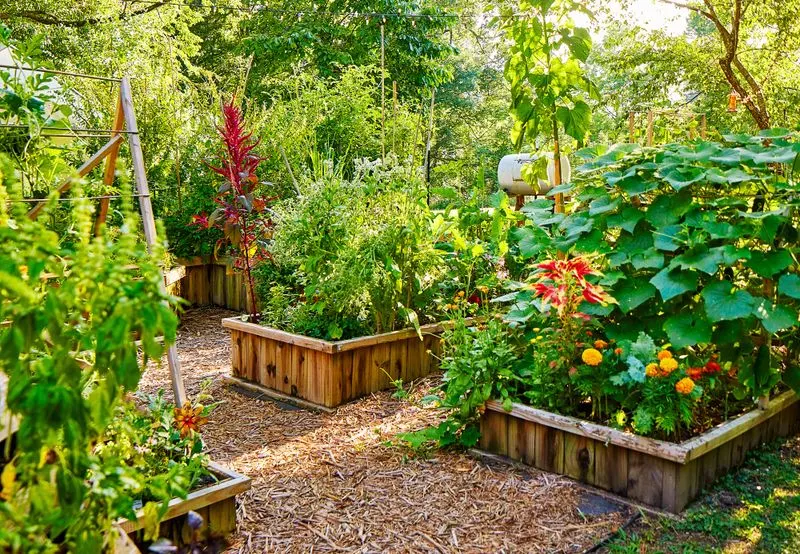
Construct raised beds using old potting soil mixed with compost and other amendments. Raised beds offer excellent drainage and allow for easy soil control. The combination of materials creates a fertile growing environment for vegetables and flowers. These beds warm up faster in spring, extending the growing season. With proper care, the soil remains productive for years to come. Raised beds are a practical solution for gardeners with limited space or poor soil quality. Utilize your old soil in raised beds to create a thriving garden retreat.
Rejuvenating with Fertilizer

Revive old potting soil by replenishing its nutrient content with fertilizer. Choose a balanced, slow-release fertilizer to ensure sustained nourishment. Incorporate the fertilizer into the soil by gently mixing it in. This refreshes the soil, making it suitable for a new growing season. Fertilizers provide essential nutrients like nitrogen, phosphorus, and potassium, which may be depleted over time. Regularly treating used soil with fertilizer maintains its fertility and supports healthy plant growth. This straightforward method breathes new life into tired soil, preparing it for future plantings.
Topdressing Lawns
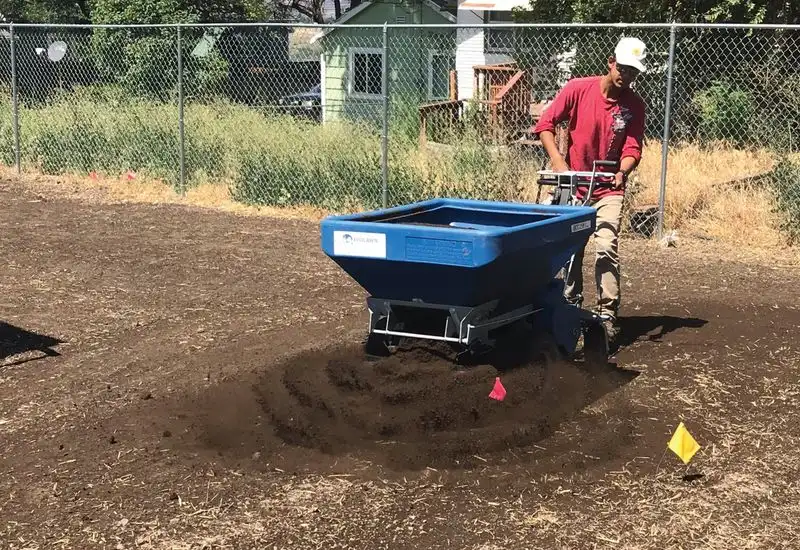
Enhance your lawn’s health by topdressing it with old potting soil. Spread a thin layer over the grass to improve soil structure and nutrient availability. The practice of topdressing introduces organic matter into the lawn, fostering beneficial microbial activity. As the soil settles, it works its way into the existing lawn, promoting thicker, greener grass. It’s a cost-effective way to utilize used soil and improve lawn quality. Regular topdressing can help manage thatch and compacted soil issues. This technique provides a practical use for old potting soil.
Making Soil Mixes
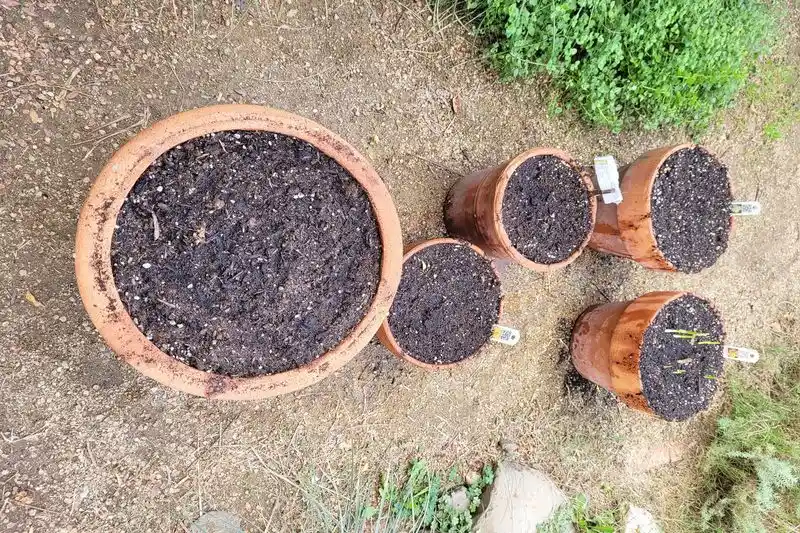
Craft customized potting mixes by combining old soil with other ingredients. Blend with perlite, vermiculite, or sand for improved drainage and aeration. Adding organic matter like compost boosts nutrient content. This approach allows you to tailor the soil mix to specific plant needs. Experiment with different combinations to find the perfect balance for your garden. Reusing soil in this way reduces waste and saves on gardening costs. Creating specialized mixes improves plant health and vigor. It’s an innovative way to give old potting soil a second chance.
Erosion Control
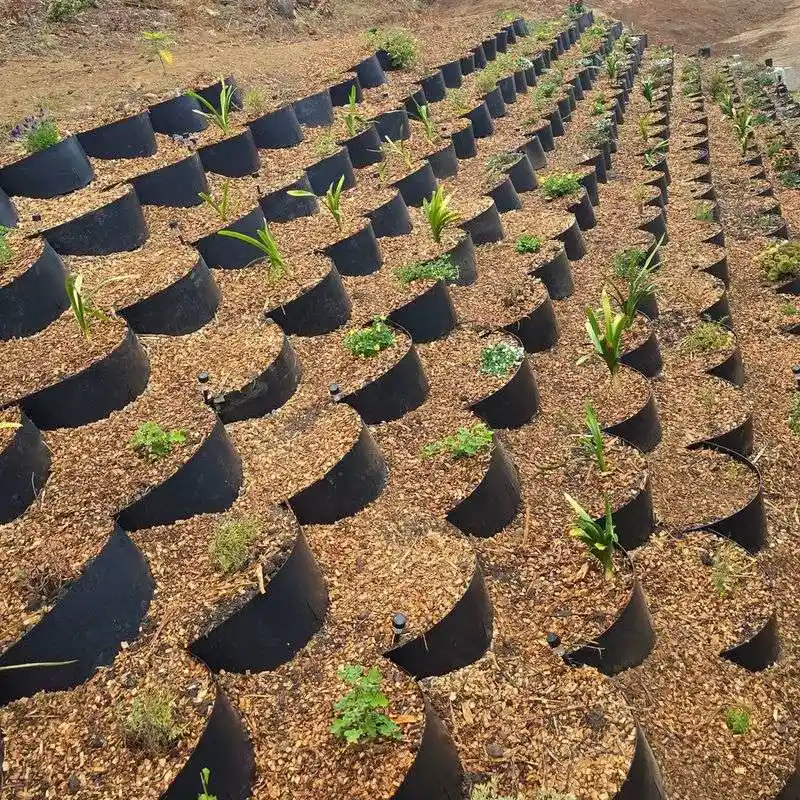
Old potting soil can be repurposed to combat erosion in vulnerable areas. Spread the soil over exposed spots on a slope or bare land to stabilize it. The organic matter in the soil helps retain moisture and supports plant growth. Over time, vegetation will take root, further anchoring the soil in place. This natural approach to erosion control is environmentally friendly and effective. By using excess soil in this manner, you contribute to landscape preservation and restoration. It’s a creative way to address erosion issues while recycling used soil.
Soil for Seed Starting
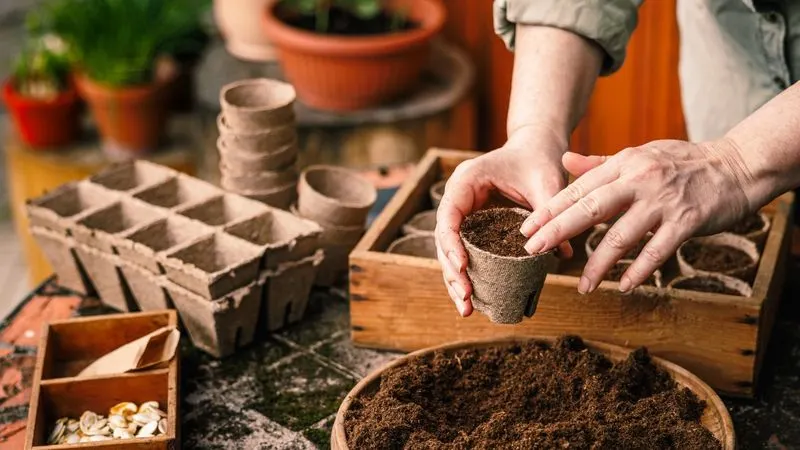
Repurpose old potting soil for starting seeds indoors or in a greenhouse. Begin by sterilizing the soil to eliminate pathogens and pests. Once treated, mix it with a seed starting medium for the best results. The lightweight texture of aged potting soil makes it ideal for delicate seedlings. As the seeds germinate, they benefit from the nutrients present in the soil. Starting seeds this way maximizes the use of old soil while supporting early plant development. It’s an economical choice for gardeners eager to begin the growing season.
Soil Amendment for Trees
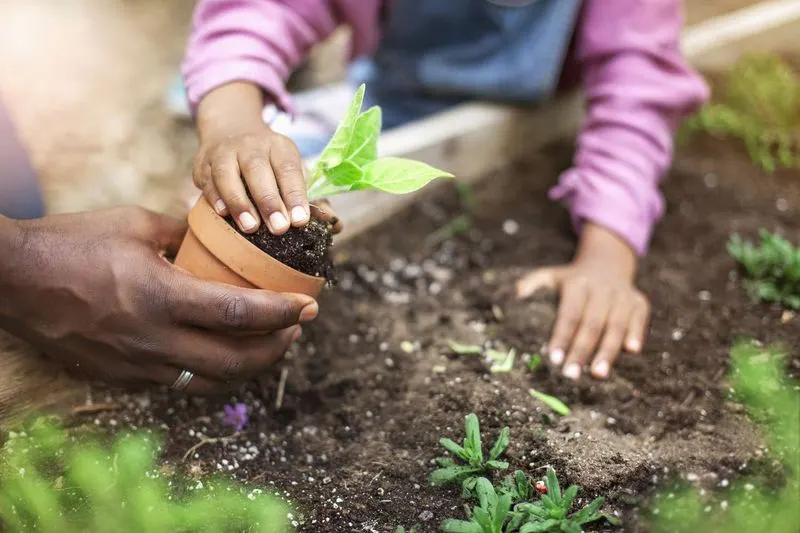
Boost tree growth by using old potting soil as an amendment. Mix the soil into the existing ground around trees to enhance nutrient content and soil structure. The organic matter improves water retention and root growth. Suitable for both young saplings and mature trees, this method promotes a healthy, vibrant canopy. Amending soil around trees with used potting soil is a sustainable practice that nurtures long-term tree health. Integrating leftover soil into landscaping efforts benefits the environment and your garden. It’s a resourceful way to recycle potting soil.
Community Gardens
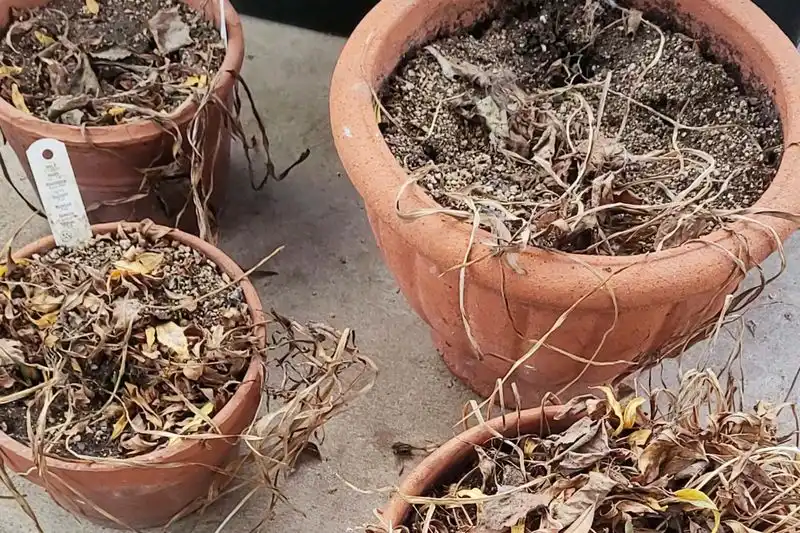
Donate your old potting soil to a community garden in need of resources. These gardens often rely on contributions from the community to thrive. The soil can be revitalized by blending it with compost or other amendments. This practice supports communal gardening efforts and fosters a sense of shared responsibility. Participating in community gardening not only benefits your neighborhood but also promotes sustainable land use. By contributing to these projects, old potting soil finds new life in a collaborative, nurturing environment. It’s a meaningful way to connect with others and support urban agriculture.

